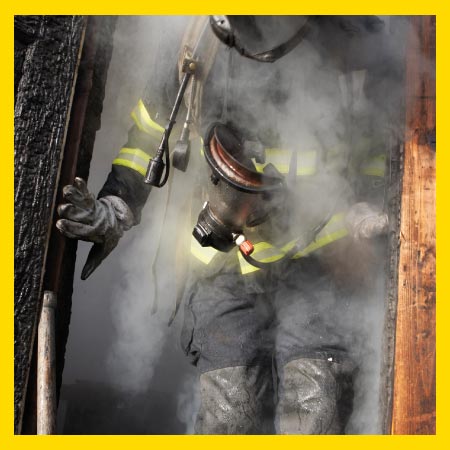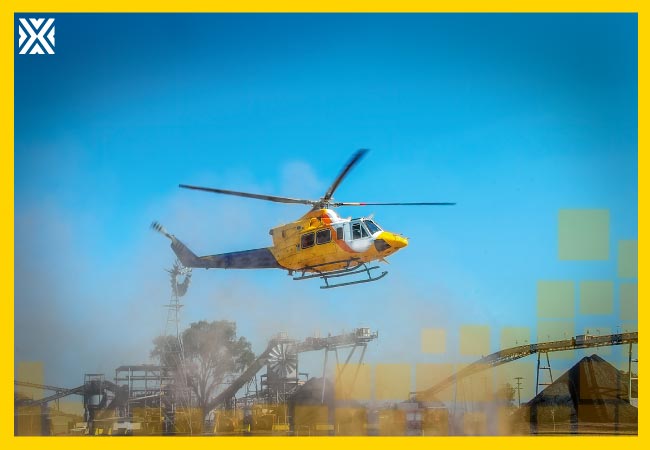Currency
September 19, 2021

From Ground Control to Major Tom. Tom Petty confirming that he Won’t Back Down. Kaiser chief’s Predicting a Riot and The Fray trying to Save a Life, it becomes apparent that emergency situations arise on occasion, to challenge the best of us.
Why then, if an emergency of some description and effect, is not an entirely infrequent event with which each of us may find ourselves confronted, do they often result in severe outcomes or aftermath of negative consequences?
To answer this question, it may be helpful to revisit the definition of an emergency. In accordance with the Oxford dictionary, an emergency is a sudden, unforeseen happening that requires action to correct or to protect lives and/or property.
In my experience, the words sudden and unforeseen are the key terms for what constitutes an emergency. In fact, I would go as far as to say that there are cases where the emergency situation was in fact anticipated; however, the sudden aspect part of the statement is what may leave us relatively paralyzed when the event presents itself.
To pair the meaning of the word sudden with that of unexpected is perhaps the reason that many individuals can find themselves under a spell of illusion when it comes to what is unfolding at that moment.

Obviously, the nature and severity of the emergency to which we find ourselves subjected play a major role.
Human nature, being what it is may bring about several varying responses within a collective group of people who may be exposed to the same, possibly threatening event.
“human nature may bring about varying responses within a group of people exposed to the same, possibly threatening event”
…Now I’m a believer
Perception: “The way in which something is regarded, understood or interpreted” Oxford
Some time back, I found myself head-on with the challenge of ensuring that employees were protected against the hazards of a confined space to which I had never could have envisaged the magnitude. The workpiece was circular and spanned at least 15 meters in diameter. Inside this monstrous circle were what felt like hundreds (but really more like tens) of sections that through the process of fabrication became increasingly confined as the job progressed. This was a huge undertaking as due to the scale of the job, it was an 18-month project. Obviously, in terms of health and safety, we had to get it right.
This was not one of those quick in and out jobs. It was months of hazardous confined space work that included all disciplines of engineering and required the knowledge and input of many human beings for its manufacture to successfully realize.
Months of planning and organizing were dedicated to the health and safety management of this project prior to the kick-off. Every eventuality was considered to the point of perfection.
No expense was spared, no box left unticked. On reflection, it was to date in my career one of the easiest undertakings in that everything requested in terms of resources for health and safety was approved immediately and without question. It was like a shopping spree at Harrods on an unlimited budget (if they would have had a section dedicated to catering for such!)
It was a 24-hour operation so on entering the workshop on a sunny Tuesday morning, it was to my surprise that I heard one of our recently installed, (top of the range) gas detectors screaming in dismay.
How long this had been the case was unconfirmed at the time and an immediate frantic visual inspection revealed that everything appeared normal. On noting my entrance, the supervisor informed me of the malfunction of the gas detector. I immediately doubted this was possible and enquired as to the daily inspection of the gas equipment in the immediate area. This had not yet been completed as no one had been working in that section of the workplace for a few hours.
On inspection, it was found that there was not a gas leak, however, the gas supply had not been isolated by the employee who had previously been pre-heating with a gas torch. The flame had extinguished and the gas supply left open. At this time, some years later, I can still reflect on this incident as strange. Surely when so much time and dedication had been invested into ensuring that everyone was on par with what to do when and what to look out for that it could not have been ignored? Training could not be questioned as this was the focal point for many a month before starting this project? This is a perfect example of how things, no matter how well planned can result in disastrous situations. None of the witnesses questioned could declare that the alarm had not been heard although the immediate assumption when noted that the area was at that time unoccupied, was that of a defunct gas detection unit rather than an actual concern… the mind boggles.
As noted earlier, perception and the reaction of people due to this factor may pave the way for difficulty in potential emergency situations.
With the above in mind, I remain steadfast in the belief that emergency situations result in less severe or often no consequences at all if adequate thought and planning are dedicated prior to such an event occurring. Although the element of the unexpected may still be present in a trying situation the fact that it may not be the first time that one is experiencing the thought process of how to react, what to do and the possible pros and cons of each move from that point forward will reassure most people when faced with a daunting situation.
In essence, at the workplace, we are afforded the luxury of doing just that. Determining what can go wrong and what to do if it does.
As mundane as the term, Emergency Procedures may at first be acknowledged as, by most, they are in fact the theoretical composition of the difference between life and death. These procedures should be comprehensive yet unpretentious, to enable any user to decipher a plan of action should the unthinkable present itself.
They should be written with the audience in mind, be comprised of step-by-step instructions, and be practical in their delivery.
Emergency procedures need to flow, they need to provide the guidance required when one or more persons would need them most.
Why then, if an emergency of some description and effect, is not an entirely infrequent event with which each of us may find ourselves confronted, do they often result in severe outcomes or aftermath of negative consequences?
To answer this question, it may be helpful to revisit the definition of an emergency. In accordance with the Oxford dictionary, an emergency is a sudden, unforeseen happening that requires action to correct or to protect lives and/or property.
In my experience, the words sudden and unforeseen are the key terms for what constitutes an emergency. In fact, I would go as far as to say that there are cases where the emergency situation was in fact anticipated; however, the sudden aspect part of the statement is what may leave us relatively paralyzed when the event presents itself.
To pair the meaning of the word sudden with that of unexpected is perhaps the reason that many individuals can find themselves under a spell of illusion when it comes to what is unfolding at that moment.

Obviously, the nature and severity of the emergency to which we find ourselves subjected play a major role.
Human nature, being what it is may bring about several varying responses within a collective group of people who may be exposed to the same, possibly threatening event.
“human nature may bring about varying responses within a group of people exposed to the same, possibly threatening event”
…Now I’m a believer
Perception: “The way in which something is regarded, understood or interpreted” Oxford
Some time back, I found myself head-on with the challenge of ensuring that employees were protected against the hazards of a confined space to which I had never could have envisaged the magnitude. The workpiece was circular and spanned at least 15 meters in diameter. Inside this monstrous circle were what felt like hundreds (but really more like tens) of sections that through the process of fabrication became increasingly confined as the job progressed. This was a huge undertaking as due to the scale of the job, it was an 18-month project. Obviously, in terms of health and safety, we had to get it right.
This was not one of those quick in and out jobs. It was months of hazardous confined space work that included all disciplines of engineering and required the knowledge and input of many human beings for its manufacture to successfully realize.
Months of planning and organizing were dedicated to the health and safety management of this project prior to the kick-off. Every eventuality was considered to the point of perfection.
No expense was spared, no box left unticked. On reflection, it was to date in my career one of the easiest undertakings in that everything requested in terms of resources for health and safety was approved immediately and without question. It was like a shopping spree at Harrods on an unlimited budget (if they would have had a section dedicated to catering for such!)
It was a 24-hour operation so on entering the workshop on a sunny Tuesday morning, it was to my surprise that I heard one of our recently installed, (top of the range) gas detectors screaming in dismay.
How long this had been the case was unconfirmed at the time and an immediate frantic visual inspection revealed that everything appeared normal. On noting my entrance, the supervisor informed me of the malfunction of the gas detector. I immediately doubted this was possible and enquired as to the daily inspection of the gas equipment in the immediate area. This had not yet been completed as no one had been working in that section of the workplace for a few hours.
On inspection, it was found that there was not a gas leak, however, the gas supply had not been isolated by the employee who had previously been pre-heating with a gas torch. The flame had extinguished and the gas supply left open. At this time, some years later, I can still reflect on this incident as strange. Surely when so much time and dedication had been invested into ensuring that everyone was on par with what to do when and what to look out for that it could not have been ignored? Training could not be questioned as this was the focal point for many a month before starting this project? This is a perfect example of how things, no matter how well planned can result in disastrous situations. None of the witnesses questioned could declare that the alarm had not been heard although the immediate assumption when noted that the area was at that time unoccupied, was that of a defunct gas detection unit rather than an actual concern… the mind boggles.
As noted earlier, perception and the reaction of people due to this factor may pave the way for difficulty in potential emergency situations.
Bittersweet symphony
With the above in mind, I remain steadfast in the belief that emergency situations result in less severe or often no consequences at all if adequate thought and planning are dedicated prior to such an event occurring. Although the element of the unexpected may still be present in a trying situation the fact that it may not be the first time that one is experiencing the thought process of how to react, what to do and the possible pros and cons of each move from that point forward will reassure most people when faced with a daunting situation.
In essence, at the workplace, we are afforded the luxury of doing just that. Determining what can go wrong and what to do if it does.
As mundane as the term, Emergency Procedures may at first be acknowledged as, by most, they are in fact the theoretical composition of the difference between life and death. These procedures should be comprehensive yet unpretentious, to enable any user to decipher a plan of action should the unthinkable present itself.
They should be written with the audience in mind, be comprised of step-by-step instructions, and be practical in their delivery.
Emergency procedures need to flow, they need to provide the guidance required when one or more persons would need them most.









